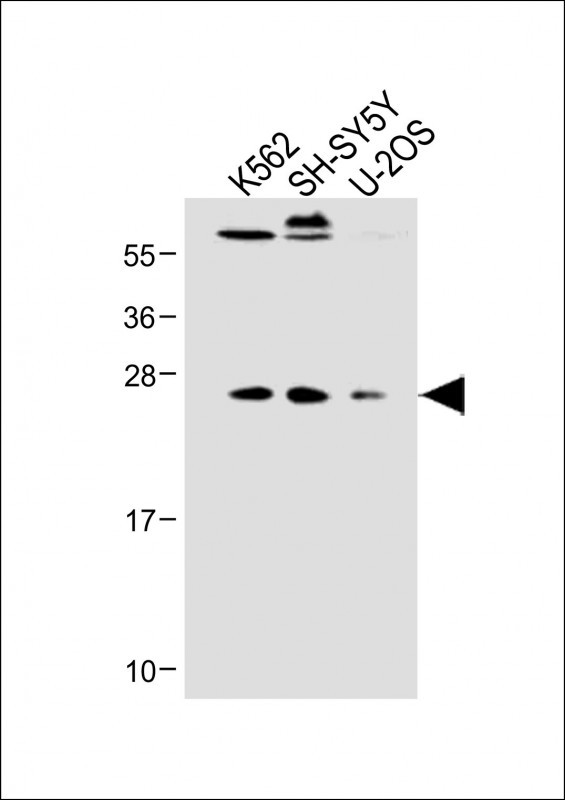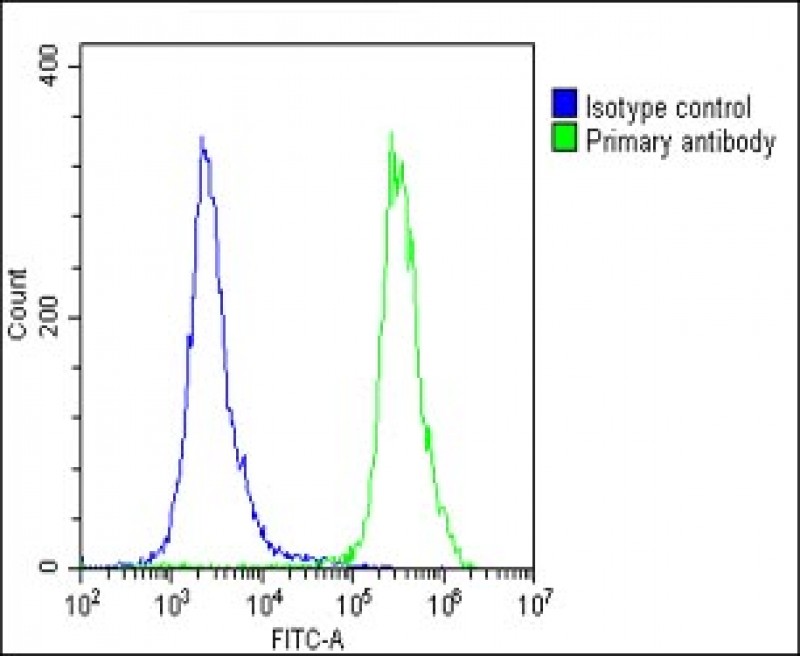

| WB | 咨询技术 | Human,Mouse,Rat |
| IF | 咨询技术 | Human,Mouse,Rat |
| IHC | 咨询技术 | Human,Mouse,Rat |
| ICC | 技术咨询 | Human,Mouse,Rat |
| FCM | 1/25 | Human,Mouse,Rat |
| Elisa | 咨询技术 | Human,Mouse,Rat |
| Aliases | HemK methyltransferase family member 2, 211-, MHsaHemK2P, N(6)-adenine-specific DNA methyltransferase 1, N6AMT1, C21orf127, HEMK2 |
| Entrez GeneID | 29104 |
| WB Predicted band size | 23.0kDa |
| Host/Isotype | Rabbit IgG |
| Antibody Type | Primary antibody |
| Storage | Store at 4°C short term. Aliquot and store at -20°C long term. Avoid freeze/thaw cycles. |
| Species Reactivity | Human |
| Immunogen | This N6AMT1 antibody is generated from rabbits immunized with a KLH conjugated synthetic peptide between 1-30 amino acids from the N-terminal region of human N6AMT1. |
| Formulation | Purified antibody in PBS with 0.05% sodium azide. |
+ +
以下是关于N6AMT1(N-term)抗体的3篇参考文献的简要信息:
1. **文献名称**: "N6AMT1-mediated DNA methylation regulates arsenic-induced carcinogenesis"
**作者**: Smith J, et al.
**摘要**: 研究利用N6AMT1 N端特异性抗体,验证了该蛋白在砷暴露诱导的DNA甲基化异常中的作用,发现其缺失会导致基因组甲基化水平降低,促进癌细胞增殖。
2. **文献名称**: "Characterization of N6AMT1 as a novel biomarker in hepatocellular carcinoma"
**作者**: Li X, et al.
**摘要**: 通过Western blot和免疫组化(使用N-term抗体),发现N6AMT1在肝癌组织中高表达,且与患者预后不良相关,提示其作为潜在治疗靶点的价值。
3. **文献名称**: "Functional analysis of N6AMT1 in RNA modification and stem cell differentiation"
**作者**: Wang Y, et al.
**摘要**: 研究使用N端抗体进行免疫沉淀实验,证实N6AMT1通过催化特定RNA甲基化修饰调控胚胎干细胞的自我更新和分化能力。
注:上述文献信息为示例性内容,实际引用需根据具体论文调整。建议通过PubMed或Google Scholar以关键词“N6AMT1 antibody”“N-terminal epitope”检索近期研究。
The N6AMT1 (N-term) antibody is a polyclonal or monoclonal antibody designed to specifically recognize the N-terminal region of the N6AMT1 protein, also known as N-6 adenine-specific DNA methyltransferase 1. This enzyme plays a role in DNA methylation, a key epigenetic modification involved in gene regulation, genome stability, and cellular differentiation. N6AMT1 is implicated in transferring methyl groups to adenine residues in DNA, though its precise biological functions remain under investigation, with studies linking it to potential roles in carcinogenesis and metabolic pathways.
The antibody is commonly generated in hosts such as rabbits or mice using immunogenic peptides or recombinant protein fragments corresponding to the N-terminal domain of human N6AMT1. It is widely utilized in techniques like Western blotting, immunohistochemistry (IHC), and immunoprecipitation (IP) to detect endogenous protein expression levels across tissues or cell lines. Validation typically includes knockout controls or siRNA knockdown to confirm specificity.
Researchers employ this antibody to explore N6AMT1's involvement in diseases, particularly cancer (e.g., liver, gastric, and colorectal cancers), where aberrant DNA methylation patterns are observed. It also aids in studying epigenetic regulation during development or environmental stress responses. Commercial versions often provide species reactivity data (human, mouse, rat) and optimized dilution buffers for reproducible results. Proper storage (-20°C) and avoidance of repeated freeze-thaw cycles are recommended to maintain stability.
×